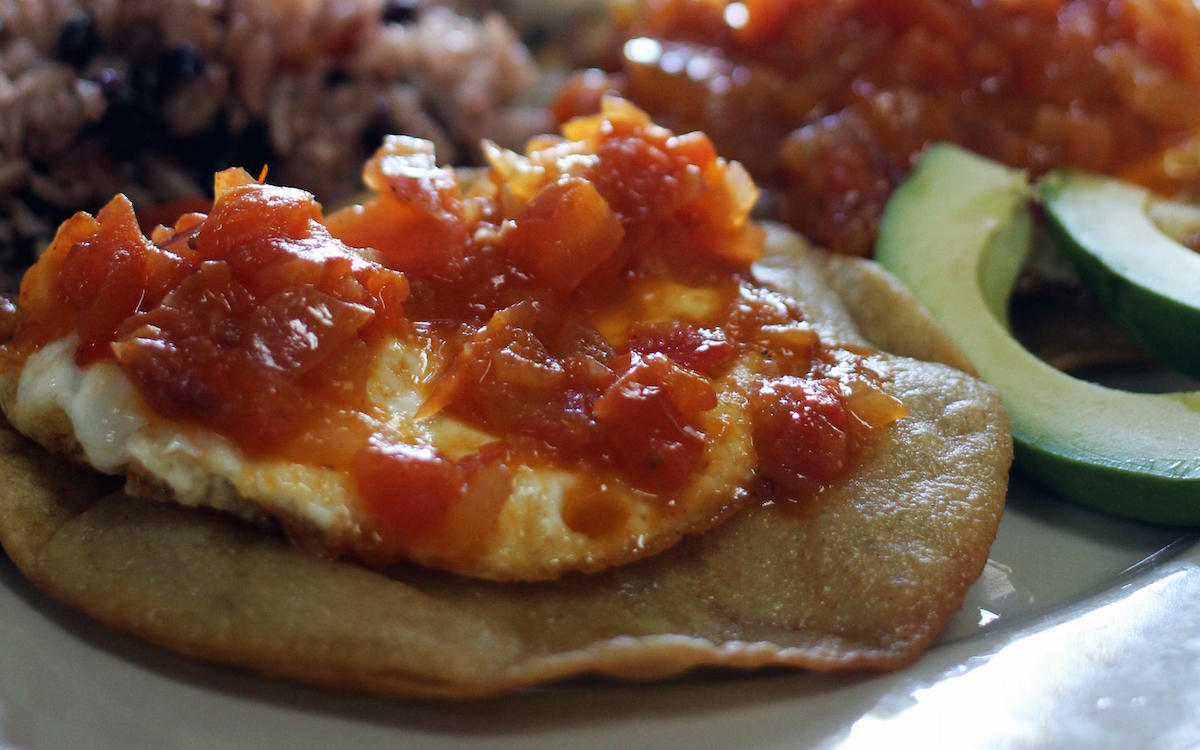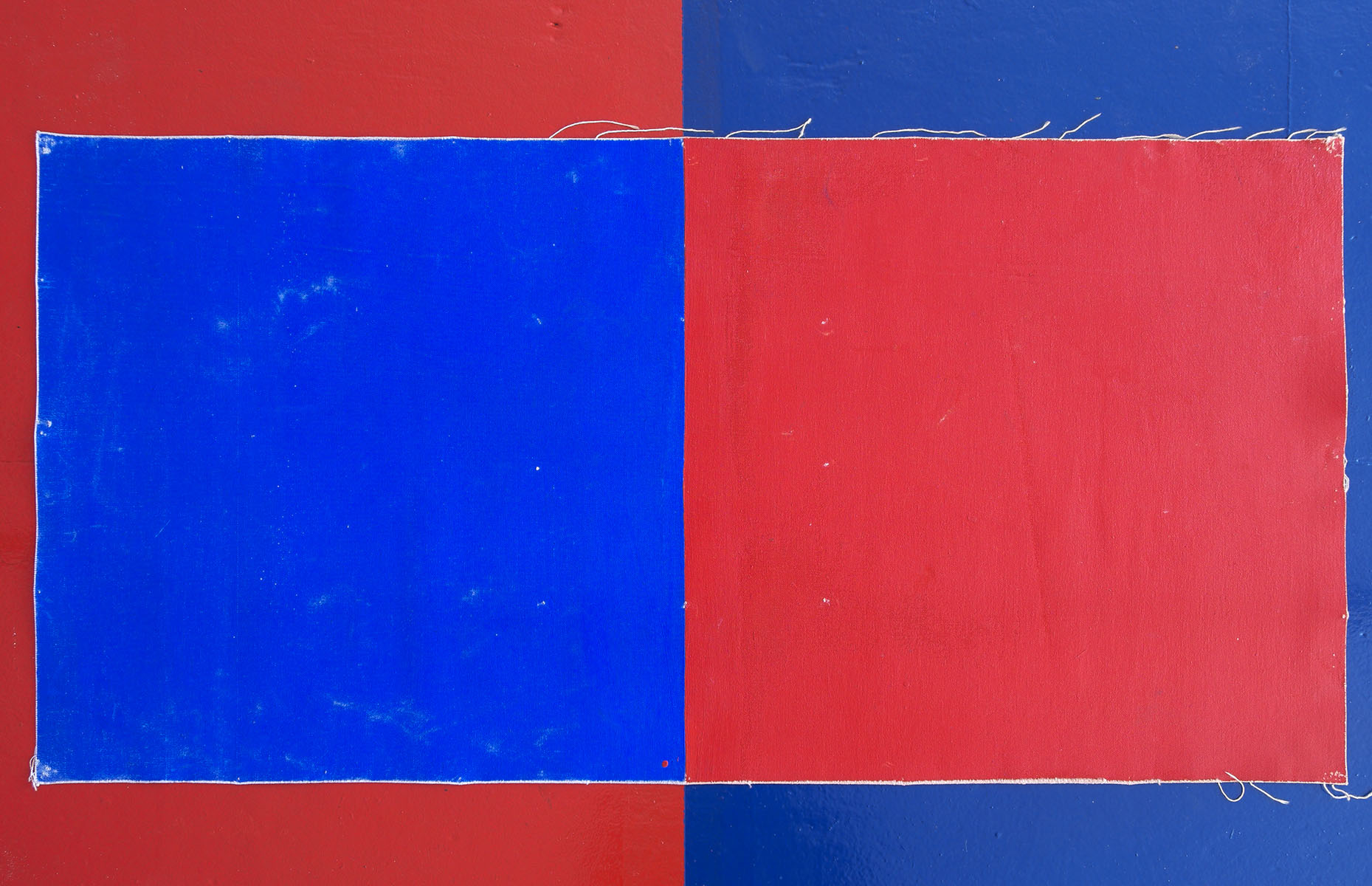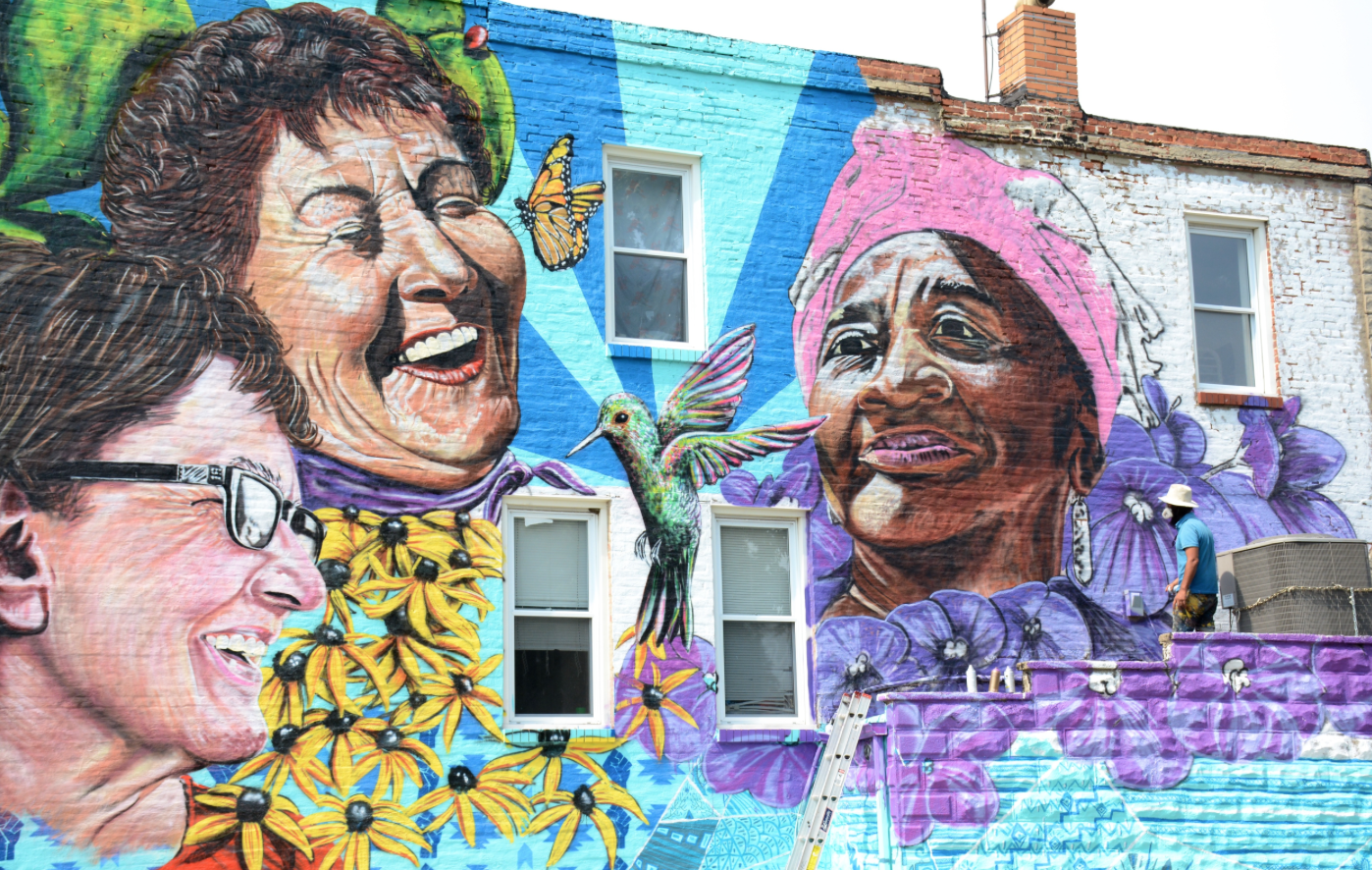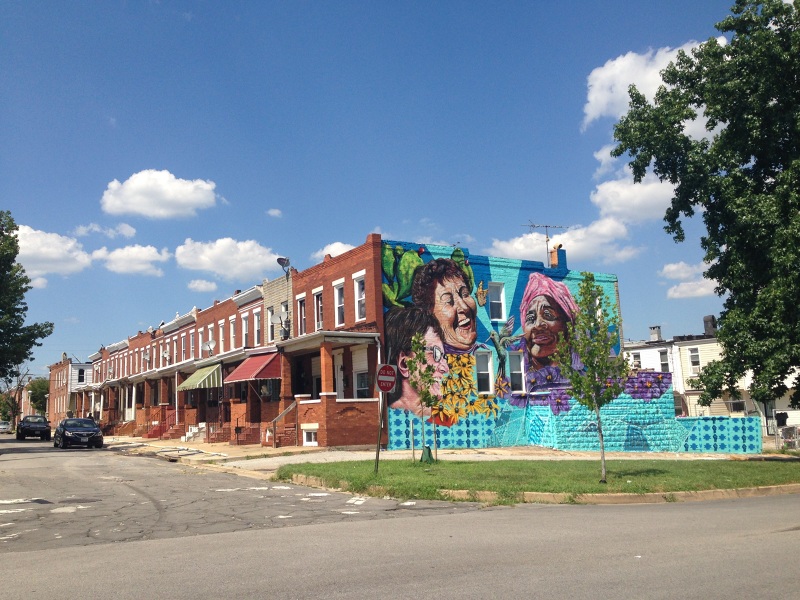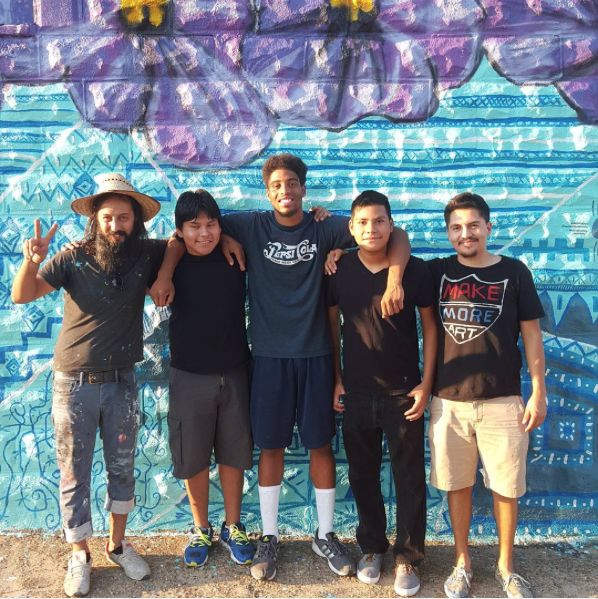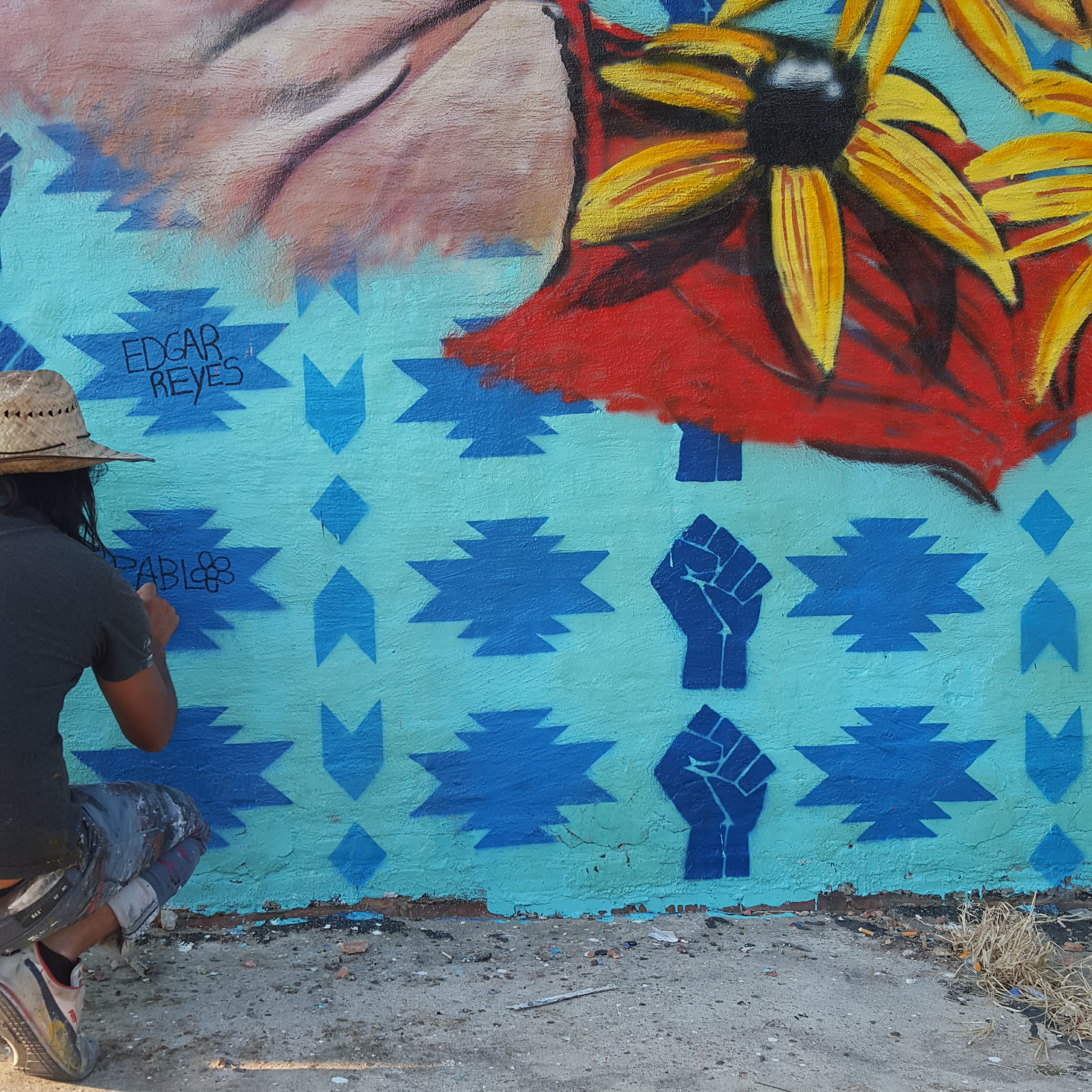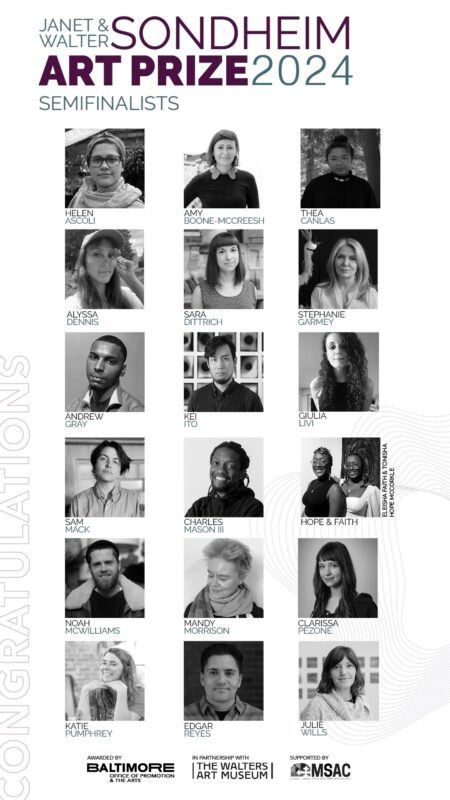The Collaborative Murals of Pablo Machioli and Edgar Reyes by Jermaine T. Bell
I first saw one of Pablo Machioli’s murals at The Creative Alliance in the “Latinismo and Chicanismo” exhibition of 2014. A mutual friend introduced us and that was that. But, then, I saw his work again, tucked away in a small studio housed near Erick Benitez’s La Bodega Gallery in the Copy Cat Building in Station North. This was my opportunity to see inside this artist’s lair! Machioli and his partner, Lauren Poor, gave my friends and I a detailed walk through his studio, and even showed us pieces that hadn’t even been exhibited yet. And then, that thing happened where once you notice something, it shows up everywhere.
After that, I saw his work on the side of several buildings in the Bromo A&E district. I saw it on buildings by the Horshoe Casino. I even saw it when I didn’t know I was seeing it. During Baltimore’s weeklong fever dream, now remembered as “the uprising,” Pablo’s work showed up in many a march in the form of colorful oversized hands with empowering words emblazoned upon them. After seeing this, I wanted to know how a man who had been in Baltimore for only two years had aligned himself with so many meaningful and good projects.
More recently, Lauren invited me to a ‘signing ceremony‘ for a new mural in East Baltimore. The mural was commissioned by the home’s owners, Harvey and Joyce Cottle, who wanted to give back to the community in this way. The new mural was produced with the help of Open Hearts, an initiative of Edgar Reyes and a partnership with Baltimore United Viewfinders and CASA de Maryland where African American and Latino youth of East Baltimore work together using “communal design practices to promote cross-cultural sensitivity.”
More information from Open Hearts about the process: “On a weekly basis the participants meet to review and implement art as a tool for promoting social change. This ongoing creative output serves as an important means for self-expression and a platform for stimulating mutual respect. With direct guidance from Reyes, the youth work together to build a sense of understanding and respect among the current African American population and the influx of new Latino community members. The goal of this project is to provide an avenue by which neighbors of distinct cultural backgrounds in East Baltimore can connect and have conversations that will lead to a better understanding of each other’s identity and build a stronger sense of community.”
This project, which seeks to amplify and combine the voices of two disenfranchised communities through the arts, is fairly unique, especially in Baltimore. I talked with Pablo and Edgar shortly after the signing ceremony about what motivated them to do this work.
JB: Neither of you gentlemen is from Baltimore, correct?
PM: I am from Uruguay. I immigrated to the United States in 2003 and started making art in 2012. I am a self-taught artist.
ER: I am from Mexico and have lived in the D.C. area most of my life. What brought me to Baltimore was graduate school. I am an alum of the Community Art MFA program at the Maryland Institute College of Art.
JB: How did you get involved with Mi Espacio (the afterschool leadership and enrichment at CASA for Latino high school students in Baltimore City)?
PM: I met Edgar Reyes at the Creative Alliance while painting a mural for the Latinismo and Chicanismo group exhibition in 2014. During the process of installing the exhibition we got to know each other and found out how we have a lot in common – especially in using art as a tool to engage diverse new generations and communities. Then he asked me if I would like to get involved in a project he started with Mi Espacio, and I said sure!
ER: I was an Americorps Volunteer with Baltimore United Viewfinders and helped teach art classes at Mi Espacio. I am still an ongoing volunteer at CASA de Maryland.
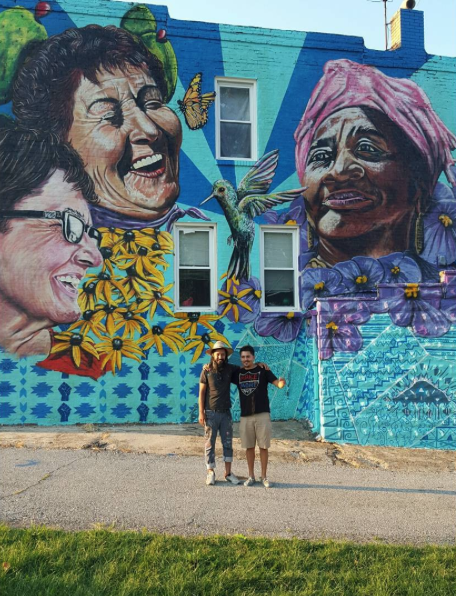
JB: Why did you want to be involved in this project? Why is it important to you?
ER: I believe it is significant to portray the diversity of the community, especially as more immigrants are calling Baltimore their home. It is important to me for people to see themselves in the work that is put in their community. Having lost a loved one due to racial tension, my drive is to create work that encourages cross-cultural sensitivity and cooperation.
PM: I joined because Edgar has a real passion for art, culture, and people and he is doing a great job inspiring youth to use art to express themselves. This project is important to me because it combines community and collaboration, which I believe is an awesome way to inspire others.
JB: Pablo, how long have you been painting murals?
PM: Almost 2 years.
JB: How does this differ form your other work?
PM: I use art as my own language and a learning tool. My work represents what I want to say, what I feel, or what I am experiencing in the moment. The way I express it through the materials or techniques is always evolving and changing, adapting to the resources and place.
JB: Have you ever worked with kids before? What was it like for you?
PM: I have been teaching kids for 11 years, but not visual art–I was teaching martial arts. Last year I started the Breathing Peace project and that gave me the opportunity to reconnect with a new generation and talk about art, unity, and peace at different schools in Uruguay, Peru, and here. I was able to collaborate with residents, students, and teachers creating murals, which opens new doors to learn about different cultures and create a better message. With Edgar and Mi Espacio I am having the same experience. It feels good having the opportunity to spark an artistic side in new generations and stimulate positive creativity.
ER: I am a full time High School teacher in D.C. Working with kids is my life passion, along with making art. Working with kids is a constant reminder for me that there is hope for change in this world.
JB: Pablo, you were a construction worker by trade, right? How did you segue from construction to painting?
PM: I am a self-taught artist. It was a necessary change for me. So much to say, learn, and express and construction didn’t give me that outlet. I would like to tell you the all the details of this transition to inspire others, but is too long. I can tell you it has been an amazing journey so far.
JB: So, Edgar why Community Arts? Is there something in your past that made you want to do this work?
ER: I think it’s important that teens have an outlet to create social change through the use of art and design. While growing up in the DC area there was a lack of opportunities in my community to express myself and have my voice be heard. Once I started volunteering in Baltimore I realized the big role I could play as a male mentor to inner city teens by being a constant and active part of their lives. I am a community artist because I enjoy collaborating with aspiring young community leaders in developing projects to promote their vision for a stronger and more united community.
JB: How many kids do you mentor and are a part of Mi Espacio?
ER: I directly work with about eight young men. Though Mi Espacio has about 20 teens and so does Viewfinders. New students are always invited to join our efforts though each program in engaged with diverse activities. I serve to create another platform for students to get involved in social action.
JB: Who is backing the project?
ER: I received a Launching Artist into Baltimore Grant from MICA last year that has sustained our efforts along with contracted jobs to facilitate community projects. And also selling merchandise such as t-shirts and posters that the students and me co-designed.
JB: How do you compartmentalize the problems that your kids deal with?
ER: If I had to put into specific categories some of the major issues they are dealing with they are:
A: School and how do I go about going to college?
B: Police and being a young male of color in Baltimore City.
C: Friendship and making positive life choices.
D: Family dynamics.
JB: How do you feel in a city that typically sees black or white with very little focus on anything in between?
PM: I came from a country where there is not much diversity. I am still adapting and learning. I have been experiencing racism since I came here. From being illegal, from police, from whites, blacks and Latinos. Being illegal, you feel another type of racism, people treat you like you are from another planet. It is ugly. But there is hope. There are a lot more good people out there then the confused ones who help you to keep your head up and make you feel good!!
ER: It is important to recognize that a lot of community members and activist like myself see this challenge as a motivation to continue the work we do. As a Latino artist, I feel that it is vital to the development of an inclusive and vibrant city, that I am bringing into conversation issues that are shared with disadvantaged communities and that the Latino community is solely dealing with.
JB: What has been your experience as a person from Uruguay living in Baltimore?
PM: It has been a huge learning experience. In Baltimore, I feel like I learned a whole new life in this 11 years. I started out cleaning toilets, learning how to speak English, salsa dancing, teaching martial arts, and learning construction. I am still adapting to the new culture and doing art now feels surreal.
JB: How did the social unrest in Baltimore effect your work?
PM: I live here in Baltimore and I suffer personally from the system people are trying to change. I have been beaten up by police for asking them to treat me with respect. I know how it feels to be abused by the authorities. Being able to express with art I feel is an opportunity to scream for myself and others. Art is powerful tool of communication and it would be a waste if I am not using it to contribute to the community. It is also an opportunity to give back for all the support people in Baltimore are giving me.
ER: It provided my mentees and myself with an opportunity to do some direct action work and protest. We screen-printed a few dozen small flags that we handed out and put up through out the community. One side had BLACK LIVES MATTER and the other had a fist. The Baltimore Uprising is a constant topic in our conversations together. Derrick was also featured as one of the protesters on the mural that Gaia and Pablo painted at Open Works.
JB: Why is protest so important in your work?
PM: Because I live the injustice of the present moment against human rights where we live. If I don’t say something or do something about it I will feel dead. In my recent work, I have been painting the people who stand up, because they are the core of this issue and they deserve respect and support.
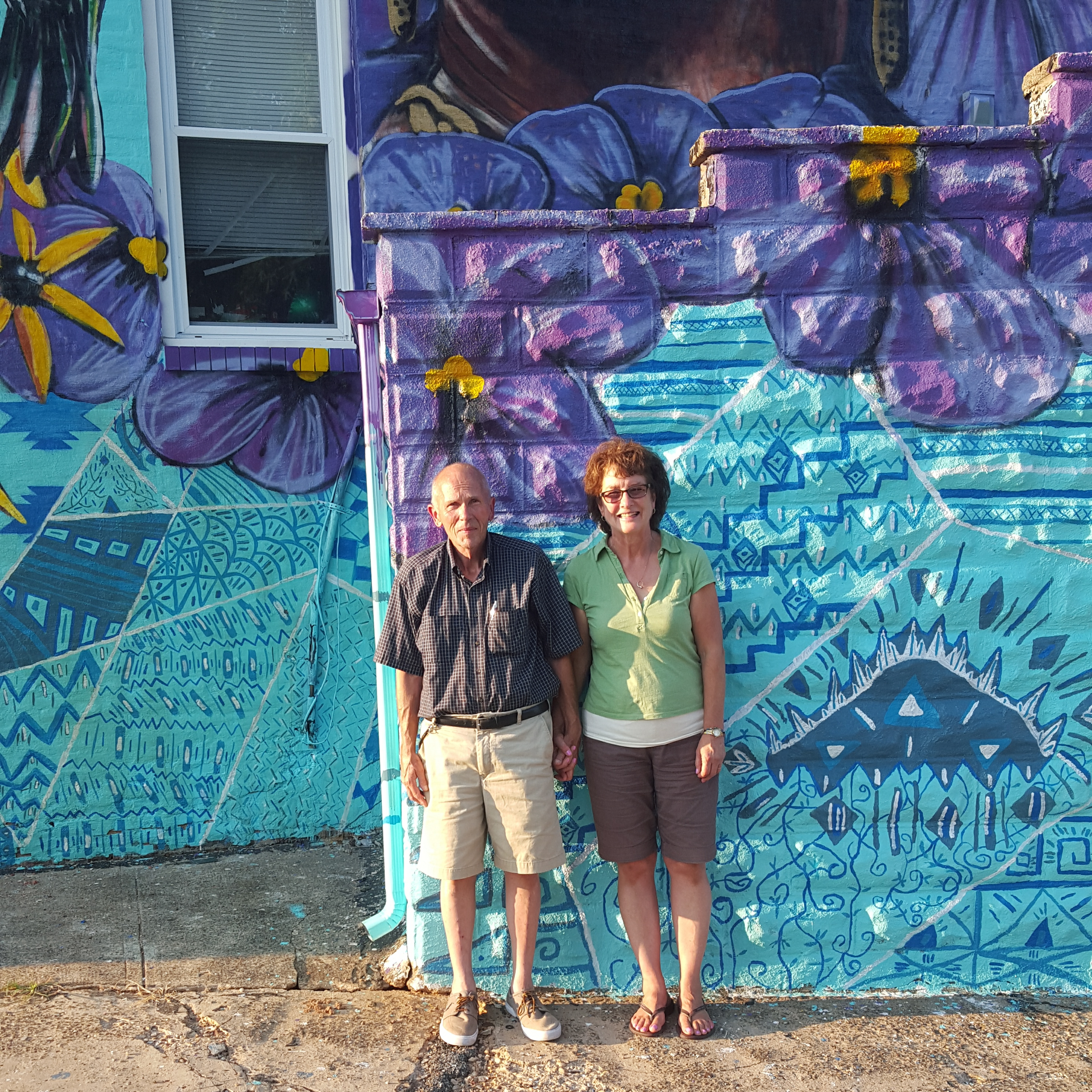
JB: How did Harvey and Joyce approach you for this commission? Why?
ER: A day laborer Harvey hired from CASA de Maryland’s works center recommended me. They commissioned me to paint the mural, as they wanted to give back to the community. They felt that this could help with revitalizing and uplifting the spirits of the neighborhood, which has dealt with of lot of crime. Joyce was in particular excited of the fact that the wall is overlooking Ellwood Park and provides the kids with something wonderful to look at besides another concrete wall. They enjoyed hearing about my practice and work with the boys and hired me. And it was perfecting timing as we have been wanting to collaborate with Pablo.
JB: Did you see a difference in the kids behavior while working on this project?
ER: The students became more engaged in the process and using the work as a collaborative community dialogue initiative. The project was more then just a mural, but a platform to engage in conversations with neighbors about migration, empathy, and aspirations for progress. But why don’t we ask Derrick himself?
[Over walks Derrick Smith, one of Edgar’s mentees]
JB: Hi Derrick, how old are you?
Derrick Smith: Hi I am Derrick Smith and, I’ll be 17 in September.

JB: How did you get involved in the project?
DS: My mentor Edgar Reyes asked me if I was interested in doing a mural and I said sure.
JB: Do you have plans to pursue a professional art career?
DS: I actually do plan on pursuing a professional art career. MICA is my top choice for college. I plan on majoring in environmental design or photojournalism.
JB: What was your favorite part of the project?
DS: My favorite part was working with the community, actually letting people come and help paint. I just really like hanging out with the kids from Mi Espacio. We have done similar projects like this before.
JB: So, the signing was just a preview? You guys have another event in the works right?
ER: It is a community event where local organizations will invited to share their resources and information about their services to the residents. Its goal is to not only highlight our hard work but also recognize the great, great potential this community has to continue being inclusive and united. There is also a gofundme (http://www.gofundme.com/
JB: Thank you guys for taking the time to talk with me.
ER: Thank you!
PM: Thank you for the opportunity to express myself. I want to share with you and others this quote, which I love: Motho Ke Motho Ka Batho Babang (A Person Is a Person Because of Other People).
The new mural is located at the corner of Jefferson St. & N Decker St in Elwood Park, Baltimore
Mi Espacio: CASA de Maryland 2224 E Fayette St, Baltimore, MD 21231
Viewfinders: MICA PLACE 814 North Collington Ave, Baltimore
Parents interested in having their kids participate can contact Edgar Reyes at www.reyesedgar.com.
Author Jermaine Bell is a Baltimore-based Graphic Designer and Writer.
